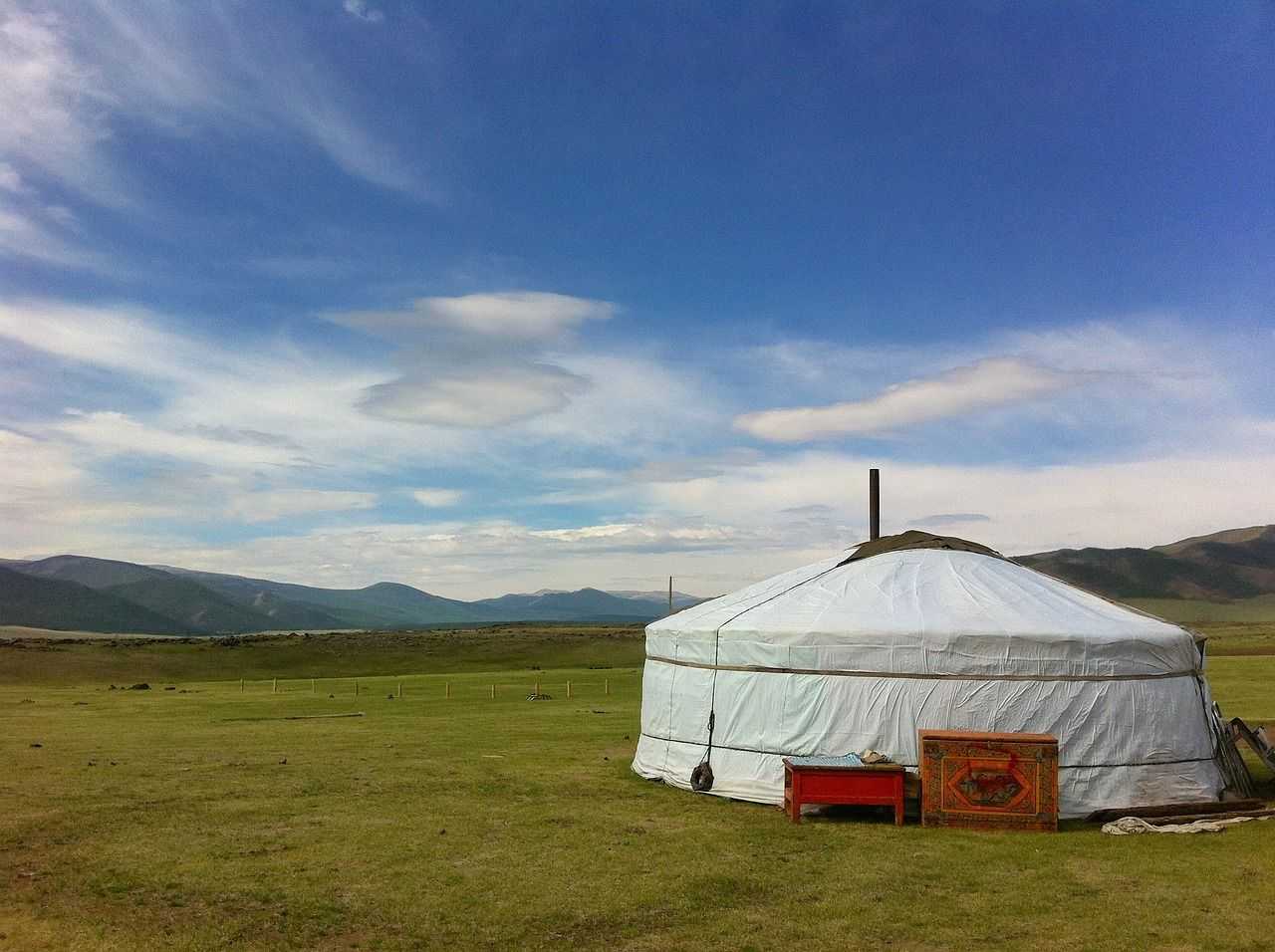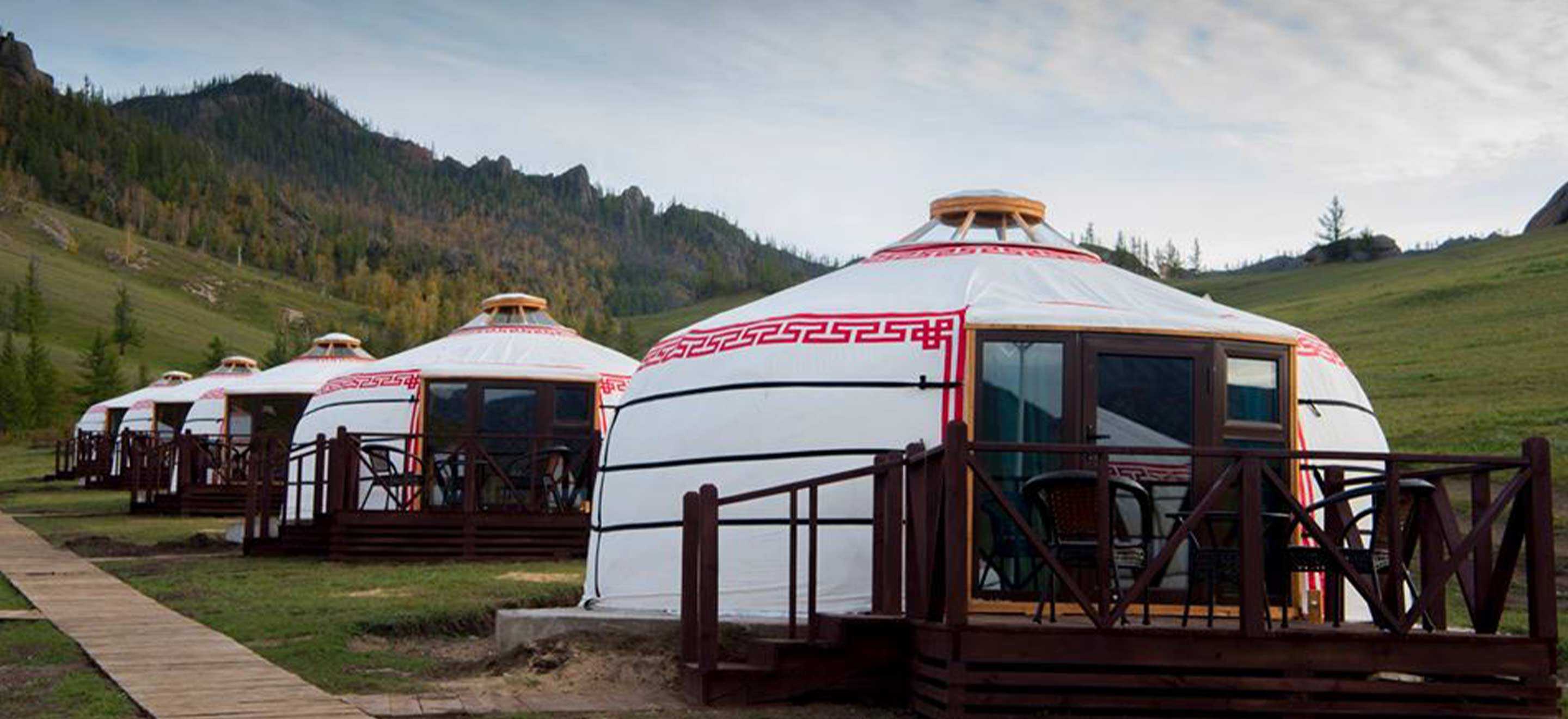
What Is a Ger?
What Is a Ger?

A ger, or traditional Mongolian dwelling, has provided shelter for nomadic families for over 3,000 years. These portable structures suited the nomadic lifestyles of herders in the Central Asian steppe and are still used by over half of Mongolian families today. Most importantly, they can be assembled in under 3 hours, taken down in an hour or less, and transported on horseback or one’s truck.
Ger construction starts with assembling a collapsible accordion-style wooden lattice, or khana. This lattice serves as the wall structure for the ger and creates its circular shape. Once people tie the lattice in place, they install an ornately painted wooden door at the entrance, facing south. From there, the roof begins to take shape. The family attaches a circular crown wheel, or toono, to two pillars, or bagana, placing them in the center of the ger as the main support beams. The toono creates a hole through which air can circulate and a chimney can be erected from the ger’s stove. Spokes called tsuulbar uni fit neatly into holes on the toono and extend to the lattice wall, creating the ger’s traditional, dome-like roof.
Once the outer structure is in place, the family covers the roof and wraps the lattice walls in layers of felt. A canvas covering helps protect the structure from the elements. Although seemingly simple in their construction, gers are deceivingly resilient and perfectly suited to weather the steppe climate, providing warmth in the harsh winters and coolness in the hot summers.
With no interior walls, the ger acts as living, sleeping, cooking, and eating quarters for an entire family. Although gers traditionally had no access to electricity or plumbing, some modern gers have solar panels to provide families with electricity and a television in some cases. It is important to note the ger’s orientation, as some sides are designated for specific family members or tasks. For example, while the center houses the stove, the east side has kitchen facilities and is intended for women, while the west side is for men. Most importantly, the space opposite the entrance in the northern center of the ger is sacred. This is reserved for guests of honor and displays any religious altars or precious items.
Should you be invited into a ger, it’s best to follow local customs. When entering, step over the threshold and make sure to step left and move clockwise throughout the ger. Be careful not to step or do anything between the bagana, as that is also considered bad luck! If you are interested in staying in a ger, consider our tour options offering a nomadic family homestay and Mongolia tour packages that include ger camps with our Nomadic Comfort Tour.

